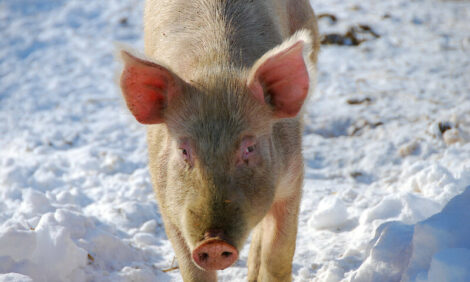



Business as Usual for Overseas Trade, Says QMS
SCOTLAND, UK - Despite the prevailing Brexit uncertainty, the next two years are expected to be pretty much “business as usual“ for red meat overseas trade, according to Stuart Ashworth, Quality Meat Scotland’s Head of Economics Services.Speaking at a media briefing on QMS’s activities for the year ahead, Mr Ashworth said the next 24 months would see the trading arrangements and influences remain largely unchanged.
“Access to overseas markets will not change, so the market will continue to be primarily driven by basic supply and demand, consumer confidence and exchange rates,” said Mr Ashworth.
“It is, however, possible that there may be some implications for the timing of livestock sales as a result of producers being keen to maintain cashflows in light of changes to support payments.”
Looking at the beef cattle sector, Mr Ashworth said Scottish prime stock prices are showing some stability and are well ahead of last year.
“There is clear evidence that producers have responded to market signals to reduce carcase weights. In February, the Scottish male average carcase was reported to be 390kg which is 4kg lower than last year. However total return per head will have been higher than last year because of the price differential,” he said.
There are more cattle on farms than this time last year, he said, but the growth in numbers is less in Scotland than it is in England and Wales, where there will be a greater percentage of beef from dairy herds. The consequence of his will be the prospect of an improved premium for Scotch Beef.
Overall beef production in the coming 12 months is likely to be a little higher than last year which, without improved demand, would constrain price movement. Ireland, which is also a key player in overall UK beef supplies, is expected to be well supplied with beef during 2017 on the back of an expected 100,000 head increase in 2017 total slaughterings.
Looking at the sheep sector, Mr Ashworth said prime sheep prices have received a boost in the past week as the key Easter holiday approaches. This increase is set in the context of a general market situation which has seen prices since the turn of the year at their lowest level for four years. The recent improvement, however, has brought them within touching distance of last year’s price.
Since the turn of the year trade has been influenced by a heavier carry-over of hoggs, many of which have been presented to the market at heavy weights and high fat cover.
“New Zealand data suggests that their lamb kill in the run up to the key Easter period has been lower than last year and exports to the UK and Europe have been running significantly below last year’s levels,” Mr Ashworth said.
“However, UK kill has been increasing through February and may run ahead of year-earlier levels later in the season. Accordingly, trade volumes may increase in the next couple of months and potentially this could affect farmgate prices at the start of the new season.”
The December census suggested a modest 1 per cent increase in breeding ewe numbers across the UK, although the Scottish breeding ewe flock is reported to have declined in size. Overall, the 2017 UK lamb crop is unlikely to be significantly different from last year.
Nevertheless, the marketplace looks challenging with UK sheepmeat consumption remaining constrained by the relative competitiveness of the lamb on retail shelves.
France remains a challenging market with the continuation of its long-term decline in consumption, however opportunities do exist in Northern Europe. Exchange rates will play a significant part in terms of allowing Scottish and UK to remain price competitive.
Looking at the pig sector, Mr Ashworth said the short to medium term prospects remain positive.
“Producers have benefited from a prolonged period of farm gate price increases which currently stand around 33 per cent higher than 12 months ago,” he said.
“Over the past few weeks prices have edged higher at a time when normally there would be a seasonal dip, suggesting a basic strength exists in the market.
Production in the EU is expected to decline during 2017, but there may be some modest increase in production in Scotland where the December 2016 census showed growth in the sow and total herd.
Demand from Asia for UK and EU pig meat remains firm with potential for some modest growth and domestic demand, which has been growing slowly over the past couple of years, also remains firm with a requirement for imports.








